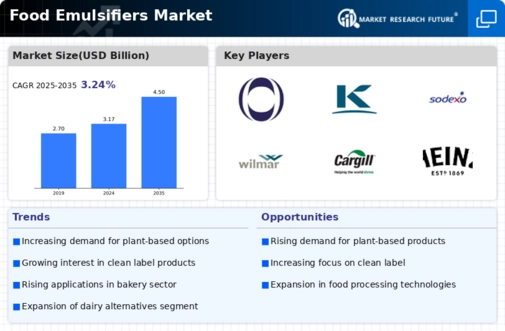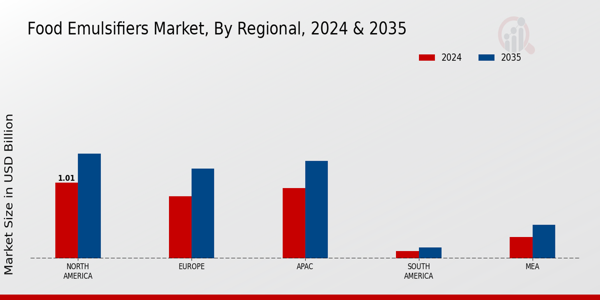Market Analysis
In-depth Analysis of Food Emulsifiers Market Industry Landscape
The food emulsifiers market is characterized by dynamic forces that shape its growth and transformation. Food emulsifiers, essential ingredients in the food industry, contribute to enhancing texture, stability, and shelf life by enabling the smooth blending of ingredients that would otherwise separate. This market has experienced increased demand, propelled by the changing landscape of food formulations and evolving consumer preferences. A significant driver of market dynamics is the escalating demand for convenience and processed foods. As consumers embrace on-the-go lifestyles, food manufacturers rely on emulsifiers to maintain product stability and texture in processed items like baked goods, dairy products, and dressings, meeting the demand for convenient and ready-to-eat options.
Furthermore, health-conscious consumer trends significantly influence the dynamics of the food emulsifiers market. Emulsifiers play a pivotal role in the creation of low-fat and reduced-calorie products, offering improved mouthfeel and sensory attributes. As consumers increasingly prioritize healthier eating habits, there is a growing market demand for food products that not only deliver on nutritional value but also maintain a pleasing taste and texture. Food emulsifiers enable manufacturers to strike this balance, driving the development of healthier alternatives without compromising sensory experiences.
The competitive landscape of the food emulsifiers market is diverse, featuring both global industry leaders and specialized suppliers. Major multinational corporations invest heavily in research and development to introduce innovative emulsifier formulations, while smaller players carve out niches in specific markets or applications. This diversity fosters healthy competition and encourages continuous advancements in emulsifier technologies to cater to the evolving needs of the food industry.
Supply chain considerations play a crucial role in shaping the market dynamics of food emulsifiers. The availability and pricing of key raw materials, such as oils and fats, directly impact production costs and, subsequently, the pricing of emulsifier products. Sustainability and ethical sourcing practices are gaining prominence as consumers and manufacturers increasingly prioritize environmentally responsible and socially conscious ingredients, influencing the choices made within the supply chain.
Consumer education and awareness are instrumental in molding the market dynamics of food emulsifiers. In an era where consumers are becoming more discerning about the ingredients in their food products, there is a growing demand for clean label and natural alternatives. Manufacturers respond by developing emulsifiers that align with clean label trends, often opting for plant-based or nature-derived emulsifiers to meet consumer expectations for transparency and simplicity in ingredient lists.
Regulatory considerations form a critical aspect of the market dynamics of food emulsifiers. Compliance with food safety regulations, labeling requirements, and quality standards is imperative for manufacturers to ensure consumer safety and meet international standards. The regulatory landscape not only sets the parameters for product development but also influences marketing strategies and market entry strategies for both established and emerging players in the industry.
Technological advancements and innovations in food processing contribute significantly to the evolution of the food emulsifiers market. As food manufacturers explore new production methods and formulations to align with changing consumer demands, emulsifiers play a vital role in achieving the desired texture, stability, and sensory attributes in a diverse range of food products.













Leave a Comment